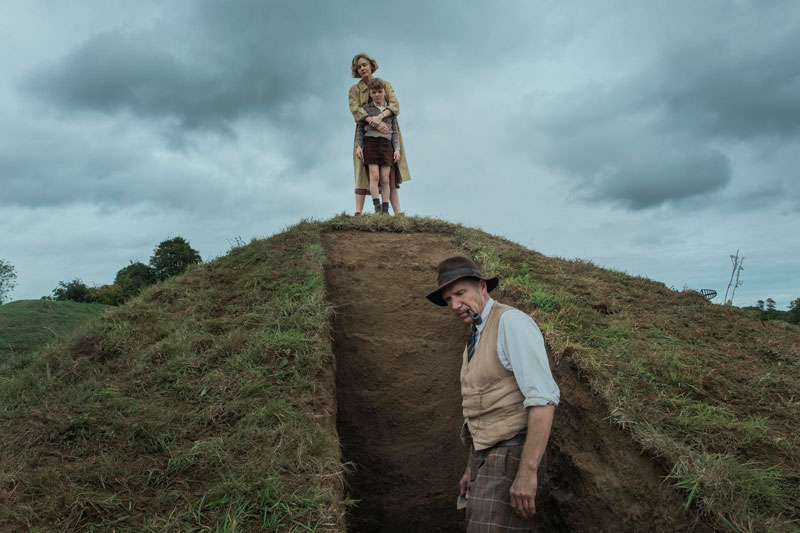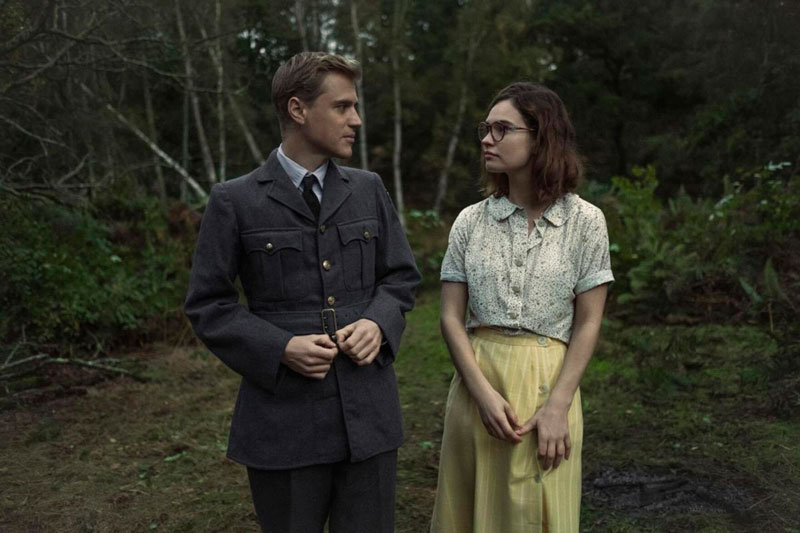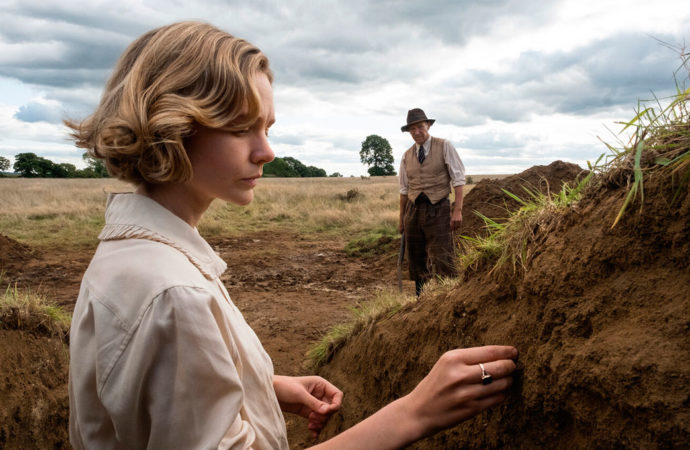The excavation, and subsequent archaeological discovery on which the film The Dig (Simon Stone, 2021) is based, took place on the Sutton Hoo estate (Suffolk, England) in 1939, although the first shovelful of earth was lifted a year earlier. The discovery of the largest naval burial site in Europe, dating from the 6th century, not only unearthed a grave goods of enormous value, but also involved the reconstruction of a past, the rewriting of an era that until then had been a historical lacuna. Ignorance obscured the period from the departure of the Romans in 410 AD to the arrival of the Viking invasions four hundred years later.
Edith Pretty, owner of the land on which several burial mounds were the subject of unfounded archaeological speculation, promoted the excavation that would uncover the richness of Anglo-Saxon culture and civilisation. To do so, he hired a quirky local character who had freelanced for the nearby Ipswich museum, a ‘digger’ who had learned his trade from his father and grandfather. Basil Brown, an encyclopaedic autodidact, had left school at the age of twelve, but his curiosity led him to the study of history, astronomy and other subjects, and he wrote popular manuals that brought him some renown.

The fascination with archaeology, the excavation of the mysteries of the past and the discovery of what has been hidden from our knowledge by the passing of time, is pure cinematic material, linked to detective suspense. The script of The Dig, written by Moira Buffini (Harlots), which ensures a feminist perspective, is based on the novel by John Preston, nephew of the archaeologist Peggy Piggot, also included in the fiction, with the usual dramatic licences. In this case, reversing the age difference between the two protagonists and transforming the photographers Merci Lack and Barbara Wagstaff into an imaginary character, Rory Lomax, Mrs. Pretty’s supposed cousin.
‘The Dig’ is an exquisite reflection on time, life, death and transcendence.
The above introduction, which is necessary for anyone unfamiliar with the details of one of the greatest archaeological finds in history, can be overlooked when assessing in part the film directed by Simon Stone, a prominent theatre and opera director, this being his second film for the cinema. Partly it is not, because the fidelity and verisimilitude provide an estimable component, which enhances, for example, the already excellent performance of Ralph Fiennes as Basil Brown. The methodical actor, originally from Suffolk, where the action takes place, nails the accent and mannerisms of the archaeologist —helped by a coach. And in part he does, because in addition to recreating a key episode for historians, The Dig could perfectly well have exploited or invented an event of similar rank without losing an iota of its interest.

The film, over which the imminent world war looms, and beyond the anecdotal story, is an exquisite reflection on time, life, death and transcendence. Death overshadows and permeates the film, through different representations, from orphanhood (the father’s grave), terminal illness or the will to transcend and perpetuate status, typical of ancestral cultures (the Anglo-Saxon grave). And, at the same time, it also shows the martial/tribal sacrifice, which in this case could be a step forward in civilisation, as it is not a price for conquest but a cost for peace, placing the British army in a position of moral superiority over the invader.

Outdated aircraft constantly fly over the excavation site. In their flying practices the planes become birds of doom, forcing those who work between the sky and the interior of the earth to raise their gaze, to become connectors of time, between the buried past and the threatening future. And this is not the only connection between above and below, past and future, because Basil Brown’s telescope also plays its part in making the connection visible and reflecting on time, from the subsoil to the stars, and reinforcing this invisible line that resituates us in the universe. Throughout The Dig, the sky and the earth play a main role with symbolic value, for example in the sequence of the landslide in the burial mound or the amateur archaeologist’s mastery of the material, the result of observation, experience and almost reverential contact with the ground, which gives him the ability to “read” in its colours or layers, revealing a respect for what he must tread upon.

The Australian director’s treatment of the landscape adds intrinsic value, reinforcing the mise-en-scène and thus the significance of Mike Eley‘s photography, including the disruption with the use of certain focuses and lenses. The positively distancing effect, moreover, is helped in certain sequences by the mismatch of sound, which is heard off-screen over the images with an asynchronous result that has an emotional effect. According to Simon Stone’s statements, he preferred spontaneity and a certain degree of improvisation to permeate the film, so that in some sequences he did not even tell Eley what the actors’ positions would be, which gives the film a freshness unusual in other period productions.
The production process of The Dig has undergone various vicissitudes and several directors and female protagonists were discussed. In 2013, Cate Blanchet was considered to play Edith Pretty, and due to a beneficial scheduling conflict, we were spared the hieratic Nicole Kidman, who was replaced by a delicate and mature Carey Mulligan. The finely tuned performance prevents us from imagining any other actress resolving this nuanced passion, understood as enthusiasm as well as suffering. The connection between Pretty and Brown, the expression of their particular relationship and understanding, work organically, not so the forced love story of Piggot and Lomax, which Lily James’ excellent work cannot always save.
Time and space, the reason for it all and the meaning of life are threaded together in The Dig, a film that shows with that absent funeral ship —whose rotting frames the centuries have replaced with a primer— the trace of the past both visible and invisible, in other words, the lesson of the shadows of Hiroshima that we have forgotten.
The Excavation had a limited theatrical release in the US on 15 January and has been available worldwide on the NETFLIX platform since 29 January.









No one has posted any comments yet. Be the first person!